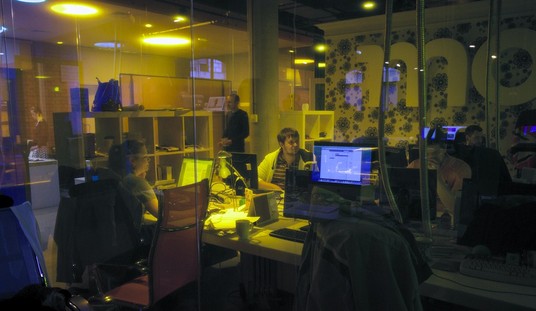Was there a massacre in 1989, in China’s Tiananmen Square? This question has now rolled round again, with a Guardian story, based on Wikileaked cables from 1989, headlined: “Wikileaks: no bloodshed inside Tiananmen Square, cables claim.”
Lest anyone conclude there was no bloodshed at all, the story itself goes on to explain that “soldiers opened fire on protesters outside the centre of Beijing.” But who reads past the headline these days? The message that makes news here is the apparent Wiki-debunking of one of the most convulsive events in modern China. That headline could have been written by the Chinese government itself. No Tiananmen bloodshed, ergo no massacre, ergo why all the fuss?
Because there was a massacre. There was a massacre in Beijing, in the streets leading in to the square. The distinction drawn at the top of this article, saying that soldiers opened fire “outside the centre of Beijing” is wildly misleading. It sounds as if the soldiers fired some shots on the outskirts of the city, then moseyed the rest of the way in to clear the square armed mostly with nothing but what a Chilean diplomat, cited in one of the Wikileaked cables, concluded was anti-riot gear (he saw wrong; the soldiers had AK-47 assault rifles, as well as clubs). As one of the reporters who was an eyewitness to some of the events of June 4, 1989, in and around Tiananmen Square, I can tell you that the soldiers may have opened fire outside the city center, but they went on firing all the way into Tiananmen itself. There was particularly heavy gunfire just before the entry to the square, cutting across one of the main roads, near the Chinese leadership compound of Zhongnanhai — an area into which a large crowd of people, when I last saw them, were being driven by the advancing troops. I ran through that area ahead of the crowd, shortly after midnight, in order to reach Tiananmen Square. When I tried to return to it around dawn on June 4, that area had been sealed off by tanks and armed solders.
As for there being no bloodshed at all in the square, that is absolute nonsense. The soldiers fired tracer bullets into the square. As far as I saw, they didn’t mow down protesters in rows, but they did hit some of them. During a half hour or so I spent near a hospital tent set up in the north end of the square, I saw seven people carried in, all of them shot. They were bleeding. Whether more were brought in, I don’t know, because I did not dare linger near that medical tent. There was too much gunfire in that part of the square.
Only near the bottom of this article, with its catchy headline about “no bloodshed inside Tiananmen Square,” does this account work around to quoting another reporter who was there at the time, the BBC’s James Miles, who says: “There was no Tiananmen Square massacre, but there was a Beijing massacre.” For more details on that, recall the “Tiananmen Massacre Map,” put out in 2008, based on information gathered by the Tiananmen Mothers. A glance at that map — an incomplete accounting, but indicative — will show that “Tiananmen” was not a literal description of where all the killing took place; it was shorthand, a symbol, of the slaughter that went on in the Chinese capital that night to suppress a protest movement that had swept not only Beijing, but other major cities in China, including Shanghai, Chengdu (where there was also violent suppression and bloodshed) and Guangzhou. For a much fuller, carefully documented account of what could be substantiated of the massacre that night in Beijing, it’s worth reading an article published in 2009 in The Nation, “Remembering Tiananmen Square,” by one of the most meticulous human rights activists I’ve ever met, Robin Munro. Munro, who was an eyewitness to the events that night in Tiananmen, wrote:
A “revisionist” trend currently emerging in some Western circles maintains that there was no massacre. That is preposterous. A massacre did take place—but not in Tiananmen Square, and not predominantly of students. The great majority of those who died (perhaps as many as a thousand in all) were workers, or laobaixing (“common folk,” or “old hundred names”), and they died mainly on the approach roads in western Beijing. Several dozen people died in the immediate environs of the square and a few in the square itself. But to speak of that as the real massacre distorts the citywide nature of the carnage and diminishes the real political drama that unfolded in Tiananmen Square.
The pity of journalistic shorthand is that it lends itself to confusions, which then pave the way for further distortions. So it is with China’s 1989 “Tiananmen massacre.” Technically it may be correct to say that there was no massacre in Tiananmen Square itself — depending on how many peaceful protesters must be shot before the shooting meets the definition of a massacre. But on the night of June 3 and during the pre-dawn hours of June 4, there was a massacre in Beijing. That was how the Chinese communist regime brutally crushed the 1989 protest movement. To downplay that massacre because the killing was not neatly confined to the symbolic space of Tiananmen Square itself is to try to dishonor with the sorriest of pedantries the Chinese people who gave their lives that night for the cause of freedom in China.









Join the conversation as a VIP Member